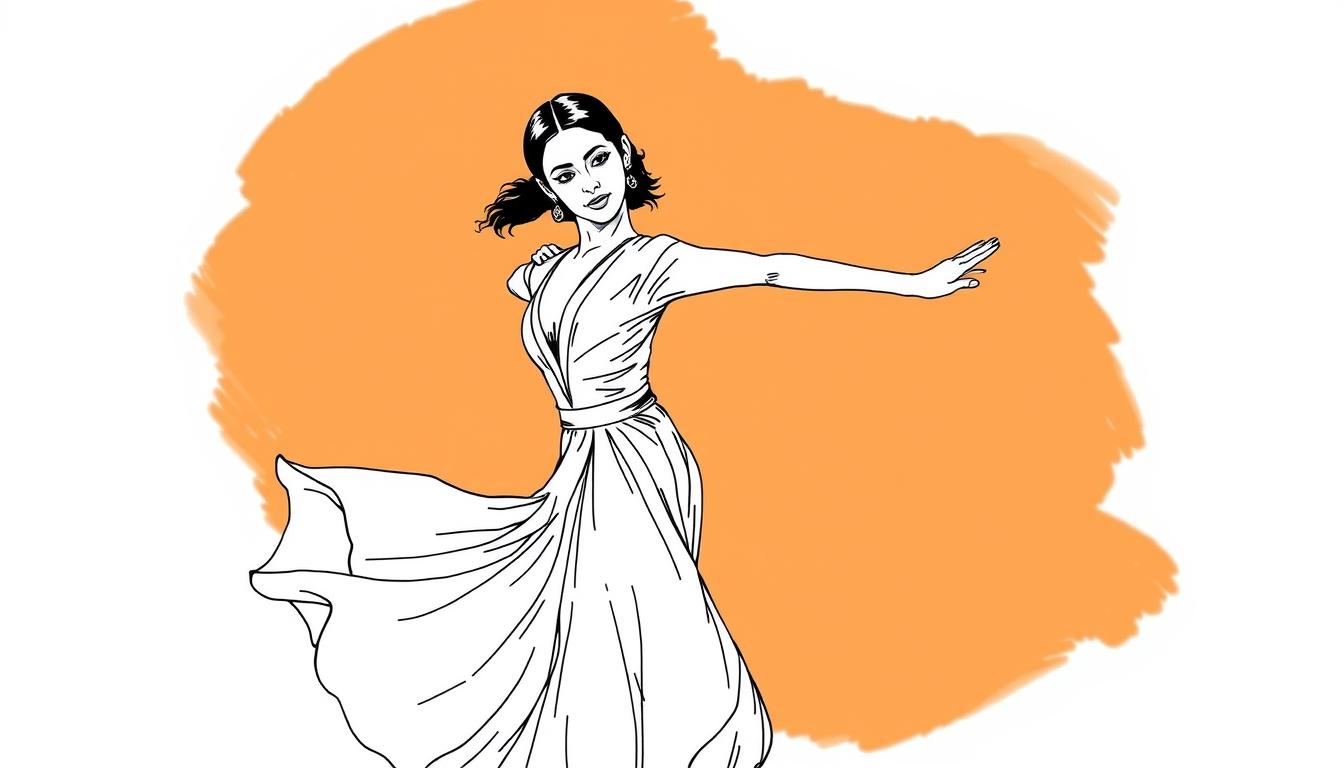Yasmine Naghdi commands the stage as a Principal with The Royal Ballet. Her journey reflects over a decade of dedication. She brings both technical precision and emotional depth to every role.
Her career spans centuries of ballet tradition. She performs leading roles in classical story ballets and newly created contemporary works. Each performance challenges both body and interpretation.
The audience at the Royal Opera House knows her for moments that linger. Character and movement merge into something timeless. It feels both immediate and deeply resonant.
Time spent in rehearsal studios translates to seemingly effortless moments on stage. The work involves layers of physical and mental preparation. This is the reality behind the glamour.
This profile captures a dancer’s life beyond the curtain call. It includes the daily routines that sustain a body in constant demand. The artistic choices of a principal dancer like Naghdi define a career built on craft.
A Journey Through Injury and Recovery
The first major injury of her career came not from a demanding performance, but from a fall while hiking. This event tested her resilience in a new way.
The Unexpected Fall and Immediate Aftermath
In September 2019, she returned from a summer holiday with a left ankle injury. A nasty fall on a mountain rock caused significant swelling.
Her ankle swelled to the size of a grapefruit. The accident sent her to the hospital and left her on crutches for the remainder of her time off.
She had to cancel a important invitation to perform at the Kremlin Palace in Moscow. Missing the chance to dance Odette/Odile was a difficult moment.
Rehabilitation and the Road Back to the Stage
Recovery became her full-time work. From September to early November, daily physiotherapy was essential.
The process focused on mobilizing the ankle and building strength in the surrounding muscles. She also worked to strengthen her metatarsals.
Returning to pointe shoes felt alien. Overcoming the fear of re-injury required as much mental strength as physical work.
Her first comeback role was the lyrical “Concerto – 2nd Movement.” This piece allowed her to plan each move and test her body’s limits carefully.
She used anti-inflammatories and ice buckets in her dressing room to manage swelling after a show. The injury was not chronic, and she made a full recovery by the end of that period.
Behind the Scenes: Intensive Rehearsals and Company Life
A principal dancer’s schedule operates on a six-day cycle that balances technical maintenance with creative development. Each day builds toward performance excellence through structured repetition.
Balancing Rehearsals and Performances
The company gathers at 10:30 each morning for class. This hour-plus session serves as both physical warm-up and mental preparation for the day ahead.
Dancers progress from barre exercises to center work. Jumping sequences elevate heart rates and engage the cardiovascular system fully.
Rehearsals occupy the afternoon hours from noon until 6:30. Dancers receive just one hour for lunch on non-performance days. The studio becomes a second home during this time.
Performance days follow a different rhythm. Rehearsals conclude by 5:30 to allow proper preparation before the evening curtain.
When dancing a lead role, principals typically keep the day free. This preserves energy for the demanding physical and emotional work on stage.
An intense week can total around 31 hours of actual dancing time. The Royal Ballet’s unique schedule blends rehearsal and performance periods simultaneously.
This constant balancing act requires immense stamina and smart recovery strategies. Rest becomes as crucial as rehearsal for sustaining a long career.
Experiencing the Magic of ‘Swan Lake’ and ‘Sleeping Beauty’
Aurora in Sleeping Beauty presents one of ballet’s most technically demanding challenges, requiring both precision and stamina. These classic roles represent career pinnacles that test a dancer’s complete artistry.
Cultivating Lyrical Movement on Stage
One memorable night during the Sleeping Beauty run required an emergency substitution. The dancer received a call while home having dinner and rushed to the Royal Opera House.
She had just five minutes to rehearse the fish dive with a new partner before continuing the performance. This unexpected show demonstrated remarkable professionalism under pressure.
The Rose Adagio demands absolute mental focus and physical control. Dancers must enter a meditative state, making body and mind work as one unit.
| Role | Technical Demands | Performance Challenge |
|---|---|---|
| Odette/Odile (Swan Lake) | Dual character transformation | Shifting from vulnerability to power |
| Aurora (Sleeping Beauty) | Rose Adagio balances | Sustaining energy through three acts |
| Both Roles | Partnering precision | Connecting with different dancers |
These performances reveal how technical mastery combines with artistic interpretation. Each ballet offers unique challenges that define a dancer’s career progression.
In-Depth with Yasmine Naghdi: Insights into a Dancer’s Life
For a dramatic ballerina, connecting with a character’s inner life is as crucial as perfecting the choreography. Yasmine Naghdi found this truth fully realized in the title role of John Cranko’s “Onegin.” Her debut as Tatiana in January 2020 was a pinnacle moment.
She had grown up with this ballet over the years. First in the Corps, then dancing Olga. Watching other artists tackle the lead role shaped her own approach.
Tatiana became her favorite part. It demands living the story’s emotions on stage. The experience is emotionally draining in a beautiful way, similar to the demands of Juliet.
The glorious score guides her interpretation. She is deeply sensitive to music, letting it amplify every feeling. If the music grieves, she grieves inside too.
Her partner, Federico Bonelli, was a skilled and generous Onegin. He created a safe space for her to explore the role’s depth. This trust is vital for such demanding work.
Director Reid Anderson gave her artistic freedom. He encouraged her to put a personal stamp on Tatiana while honoring the choreography. This balance is key for artistic growth.
The Mirror pas de deux is particularly revealing. It uses mime to express the character’s mental journey. This is where the dancer’s mind and body must merge completely.
She initially struggled with simple actions like walking in character. Advice from Alessandra Ferri one day in the studio unlocked a new level of truth. It taught her how to move with authentic purpose.
Each performance of a dramatic role like this brings new layers of understanding. It is a process of continuous artistic maturity. The dancer discovers more about herself and the character every time.
International Stages: Guest Appearances and Cultural Exchange
Performing with ballet companies around the world reveals how different traditions shape the same classical works. Each company brings its own approach to familiar roles.
Guest artists must adapt quickly to new environments. They work with unfamiliar partners and learn different production details.
Adapting to Global Ballet Practices
Studying a DVD of San Francisco Ballet’s Sleeping Beauty helped the dancer prepare for guest performances. She practiced partnering sections using her refrigerator as a stand-in prince during evening rehearsals.
The basic structure of ballets remains consistent across companies. However, production elements often vary in unexpected ways that require mental flexibility.
| Performance Location | Adaptation Required | Cultural Consideration |
|---|---|---|
| San Francisco Ballet | Different rehearsal schedule | Studying local production style |
| Bahrain | Modified choreography | Substituting kiss with embrace |
| Tokyo Gala | Learning new ballet quickly | Working with international partners |
Unique Challenges of International Tours
Learning Ballet Imperial alone in a Tokyo hotel room tested professional limits. Yasmine mastered the piece in two days while battling illness.
Standing ovations in foreign cities create overwhelming feelings. They validate the hard work behind each performance.
These experiences make dancers appreciate their home company’s support system. The Royal Ballet provides familiar partners and established healthcare.
The Power of Live Performances: Emotion and Stage Presence
The connection between dancer and audience creates a unique energy each evening. This live exchange transforms months of preparation into something immediate and raw.
Yasmine describes entering a trance-like state on stage. All technical work dissolves as her soul takes over the performance. The music guides every emotional shift.
If the score grieves, she grieves inside. This internal feeling translates through movement in ways words cannot capture. Partner chemistry remains elusive and subjective.
Each audience member perceives the connection differently. In narrative ballet like Romeo and Juliet, the role becomes a poem. The deeper meaning lives behind the movement.
Curtain calls after tragic endings present their own challenge. Naghdi needs time to emerge from the character’s world. Absorbing applause feels disconnected from the story’s end.
She appreciates fans at the Stage Door. Some evenings, she doesn’t fully return to herself until reaching home. Riding the underground among commuters feels surreal.
Emotionally intense roles drain her mentally. Lighter ballets provide energy and access to her comical side. Each performance offers audiences escape from daily life.
The power lies in each show’s uniqueness. Energy in the room, the conductor’s tempo, and emotional states shape every moment. This impermanence makes live ballet so compelling.
Wellness and Daily Routines for a Ballet Star
A dancer’s performance begins long before the curtain rises, rooted in the daily rituals that sustain the instrument of the body. For a principal, this foundation is non-negotiable. It turns grueling six-day weeks into sustained artistry.
The routine is built on consistency and listening to physical needs. Every choice supports the immense physical work of a ballet career.
Morning and Physical Routine Essentials
Yasmine starts each day with a large glass of water mixed with Klarskin Radiance Powder. This initial ritual cleanses her system. It prepares her gut for the demands ahead.
Breakfast is never skipped. Her standard fuel is a white bagel with butter, jam, blueberries, and an oat milk cappuccino. On a performance day, she switches to a more substantial porridge loaded with seeds, honey, and peanut butter for lasting energy.
Nourishing a Dancer’s Body with Balanced Diet
Naghdi’s approach to food is intuitive and practical. Her body requires a lot of carbohydrates to function through long rehearsals and performances. Pasta or rice feature heavily at lunch for this reason.
She maintains a balanced intake of protein for muscle repair and plenty of fruits and vegetables. With a fast metabolism, she often needs to eat more to avoid weight loss. Her philosophy is moderation, not restriction, even satisfying a sweet tooth with dark chocolate or biscuits.
| Meal Time | Primary Focus | Example Foods |
|---|---|---|
| Breakfast | Fast & Sustained Energy | Bagel, Porridge, Berries, Coffee |
| Lunch | Carbohydrate Fueling | Pasta, Rice, Protein |
| Dinner | Recovery & Balance | Protein, Vegetables, Carbs |
| Snacks (3-4 daily) | Blood Sugar Maintenance | Yogurt, Fruit, Oaty Biscuits |
Eating regularly is critical. Without frequent meals and snacks, her energy drops quickly. This structured yet flexible diet is key to her success.
Beauty and Self-Care Rituals On and Off the Stage
The final curtain call doesn’t mark the end of a dancer’s workday. For a principal, the hours after a performance are dedicated to recovery. This is when beauty rituals become essential tools for physical and mental renewal.
Evening Beauty Rituals for Recovery
Yasmine’s nighttime routine is a non-negotiable part of her life. She added a Retingold serum and is obsessed with the results. It gives her smoother, more even skin that feels deeply hydrated.
Since turning 30, a Bobbi Brown hydrating eye cream became a staple. This small step makes her feel more refreshed each morning. It’s a simple act of care after a long day.
Her favorite treat is a facial at Santi Spa in South Kensington. She has had light chemical peels to even skin tone and fade scarring. Before her wedding, a course of hydrating facials prepared her skin like a major role.
For at-home care, a bath with Epsom salts helps with achy muscles. She lights a Diptyque candle to create a cozy atmosphere. Finding time for this is a challenge, but the benefits for sleep are significant.
Hair care is also vital. She uses a Kerastase mask and Celui hair oil after washing. A Dyson dryer helps maintain hydration despite the demands of dance. A 111 Skin sheet mask offers a quick spa feel at home.
Pre-holiday, she books a gel manicure and standard pedicure. Her feet are in good shape, aside from a bruised toenail and thicker skin from pointe shoes. These rituals are about maintaining the body that enables her art.
| Focus Area | Primary Goal | Key Products & Treatments |
|---|---|---|
| Skin | Hydration & Evening Tone | Retingold Serum, Bobbi Brown Eye Cream, 111 Skin Masks, Santi Spa Facials |
| Body | Muscle Recovery & Relaxation | Epsom Salt Baths, Diptyque Candles |
| Hands & Feet | Maintenance & Pampering | Gel Manicure, Standard Pedicure |
For Naghdi, these routines are a functional part of a dancer’s life. They support recovery and create small moments of calm. It’s a disciplined approach to self-care that fuels performance.
Navigating Career Milestones and Artistic Growth
A dancer’s career is a map of roles, each one a milestone marking artistic growth. For a principal, this path is built on readiness and resilience.
Yasmine Naghdi sees her core responsibility as demonstrating strength and mental preparation. She trusts the artistic director’s vision for her career, rarely asking for specific parts.
Years ago, she proved her capabilities by stepping in at the last moment. These opportunities often arose from the misfortune of other dancers.
Embracing New Roles and Opportunities
Her self-criticism has matured over the years. As a soloist, every small mistake felt huge. Now, as a principal, the weight of responsibility remains, but her perspective is more measured.
She deeply values the mutual support among company dancers. This environment fosters collective growth.
Key roles have defined her journey. In 2019, she debuted as Swanilda in “Coppelia,” a witty, soubrette part. She also tackled her first Jerome Robbins ballet, “Dances at a Gathering,” cast as “Apricot.”
| Role & Ballet | Artistic Challenge | Personal Growth |
|---|---|---|
| Swanilda (Coppelia) | Light-hearted comedy, non-stop energy in Act II | Exploring a playful, soubrette character |
| Apricot (Dances at a Gathering) | Speed, abstract style, different from narrative work | Bonding with a role outside initial comfort zone |
Each new part adds a layer to her artistic life. They reveal different facets of her capabilities on the Royal Opera House stage.
These performances, born from intense rehearsals, are pivotal moments. They show an artist constantly evolving, one role at a time.
Final Reflections: Embracing the Dance Journey Beyond the Stage
The sudden halt of live performance in March 2020 forced a profound shift in perspective for dancers worldwide. For Yasmine Naghdi, the initial hope for a short break faded as weeks became months.
This unexpected time away from the studio felt like a stolen year. The rigid structure of a dancer’s life vanished, leaving an emptiness where daily ballet class once thrived.
She built a new routine, finding purpose in coaching young students online. A generous gift of professional dance flooring allowed for proper barre work at home, maintaining a vital connection to her craft.
An extended stay in Italy became a soul-healing gap year. It was a chance to finally see Juliet’s balcony and leave career pressures behind.
Feeling a deep need for artistic expression, Naghdi channeled her energy into a new project. She created a dance film by the sea, a piece projecting hope and positive thinking.
This period redefined her relationship with her work. It highlighted resilience and the enduring need to create, even when the stage lights are dark.




